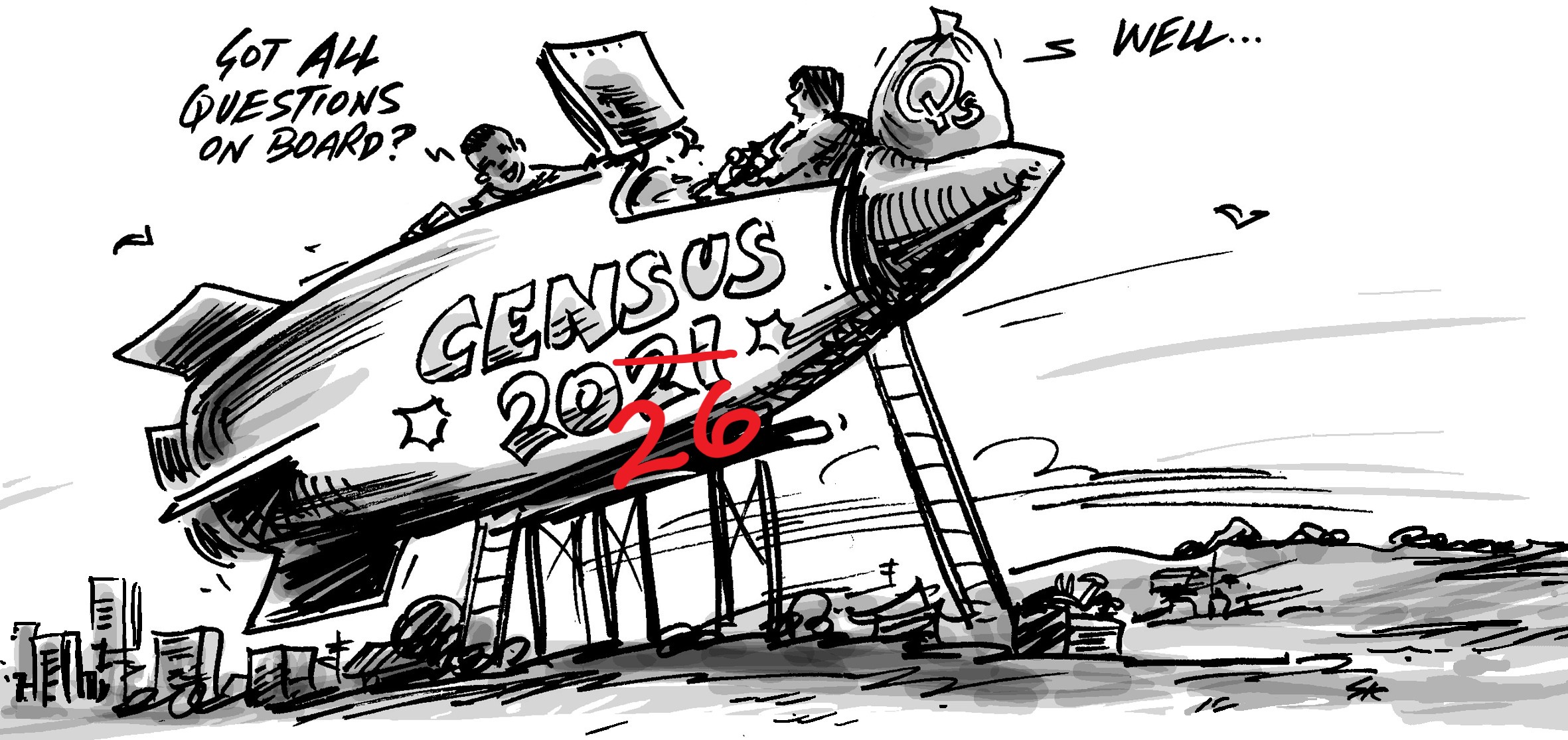Every Census, one of the topics that gathers the most interest is the changing mix of origins of Australia’s residents. Country of Birth is the easiest way to measure this. Australia is a multicultural society, and there is a lot of interest in how we’re changing. One oft-quoted statistic is that about a quarter of the population were born overseas. The interesting thing about that is that it doesn’t actually change much. About a quarter of the population have been born overseas right back to the 1800s. What does change is the makeup of those overseas origins.

What are Australia’s largest countries of birth in 2011?
The UK has always featured highly, but 50 years ago the recent arrivals were from Italy and Greece, then it was Vietnam and Cambodia. Now it’s all about China and India. The ABS publishes a standard list of about 40 birthplaces, and most of the commentary in the media focuses on the change in these groups. But the Census actually has data on 289 countries of birth, and in this article we delve a bit deeper to see what are the largest and fastest growing countries in Australia’s multicultural landscape.
The list of the top 10 countries of birth of Australians hasn’t changed much in the past 5 years.
There is only one new entry in the top 10 – Malaysia comes in at the expense of Greece (which is now 11th). The other changes are all positional – India moves up to 4th position, Vietnam and Italy both drop a spot and South Africa moves up to 8th.
Just a couple of notes about this table. Firstly, we’ve missed out the single largest birthplace group – Australia – It’s worth remembering that 70% of Australians were born in Australia and that hasn’t changed much for decades.
Secondly, we’ve included the UK as a single nation. In some ABS data, England, Scotland, Wales and Northern Ireland are separated out, but our rule is if they compete as a single country in the Olympics, they are a single country (Commonwealth Games don’t count!).
Which countries had the largest increase between 2006 and 2011?
This chart shows the 20 countries of birth which increased the most, in absolute terms between the 2006 and 2011 Censuses.

India had by far the largest increase, up by 148,256 people and doubling in size. China was next with 112,381, followed by New Zealand, up by 93,932. More than 10% of New Zealanders now live in Australia. These figures differ significantly from those I profiled in last year’s blog series on immigration – because those figures related only to permanent settlement Visas and missed out New Zealanders who don’t need a Visa and also misses out students, who make up a large part of the Indian increase.
Other big increases are from South Africa, Malaysia and the Philippines.
Countries which don’t appear in ABS standard output but increased substantially include Iran (+11,905), Afghanistan (+11,847), Bangladesh (+11,713) and Nepal (+20,070).
Another interesting one is Ireland, which has been steady at around 50,000 for the past 4 Censuses (millions of people claim Irish ancestry but not many were actually born there), but has jumped by 17,060 in the last Census. Apparently this is due to the major economic downturn in Ireland (and Europe more generally).
On the other side of the equation are those countries of birth which declined the most between 2006 and 2011. These entirely consist of European countries whose main migration peaks were immediately post WWII. Those who were born there are now quite elderly, and mortality means that their numbers are now lower. This doesn’t mean that the community is dying out in Australia – second and third generation migrants often continue cultural traditions, and the Greek-speaking population remained unchanged between 2006 and 2011.

Note that “South Eastern Europe nfd” mainly consists of those stating their birthplace as “Yugoslavia”.
Which countries were emerging between 2006 and 2011?
Of most interest is the smaller countries of birth which had the largest increases relative to their existing populations. These are growing the fastest, and in many cases are the ones that local government will need to plan for, as we are less likely to have the existing community infrastructure in place (interpreters, library services, language services, community cohesion) to support these populations. They are also less likely to appear in the standard ABS output list, as this is based on the largest groups in the previous Census.
We do need to be a bit careful when dealing with percentage growth, because it’s easy to ascribe massive growth to extremely small populations. An example is the African nation of Togo, which grew as a birthplace by 714% between 2006 and 2011, from 34 people Australia-wide up to 277. While this may be significant if they’re all in one community, at an Australia-wide level it’s not significant, so I’ve restricted the calculation to birthplaces with at least 1,000 people in 2011 (a list of 125 countries!).

Most of the countries on this list are not in the ABS standard output so we haven’t heard much about them since the Census data’s been released.
As predicted in my immigration blog last year, in percentage terms, the largest increase is in people from the small Himalayan nation of Bhutan. The increase in this group is actually 1600%, but I’ve cut the chart at 600% so that differences in the other groups are still visible. Australia is now home to 2,455 people born in Bhutan, up from 139 in 2006. Still a pretty small group overall, but the next largest is the most impressive increase of all. People born in Nepal went from 4,566 people in 2006 to 24,636 people in 2011, an increase of 440%, to become Australia’s 45th largest birthplace group, and leapfrogging countries such as Serbia, Hungary, Russia, Cyprus and Mauritius.
My understanding (and please correct me if I’m wrong) is that some of these immigrants from Nepal were actually born in the Bhutanese refugee camps there, and are of Bhutanese descent.
Looked at in percentage terms, the increase in the population from India is even more impressive. Remember that it’s much easier to get into a fast growing list if you’ve got a very small population to begin with, because of the way percentages work from a base population. Despite an already large population base of nearly 150,000 in 2006, India still managed to be the 7th fastest increase and is the only one of those in the fastest growing list with a population of more than 50,000.
Many African nations feature in the fastest growing list – these countries had relatively small Australian populations before, and have had increases in the hundreds or thousands, propelling them up the list. These include DR Congo (the nation formerly known as Zaire), Liberia, Nigeria, Burundi and Sierra Leone. Notably absent is Sudan (including the new nation of South Sudan) which had a modest 20% increase Australia wide (Sudanese are now outnumbered by Nepalese in Australia). Most Sudanese immigrants arrived before 2006.
Venezuela and Saudi Arabia are two big increasers that don’t get talked about much. Saudi Arabia was a particularly large increase, up from 3,482 to 10,515, and now ahead of Ethiopia, Syria, Sweden and the Czech Republic in numbers.
Conclusion
Australia’s cultural mix is clearly changing. While there is little change in the top 10 multicultural groups, we are becoming more diverse, with substantial numbers of people from a wide range of countries. There are now 125 countries of birth with more than 1,000 Australian residents counted in the Census, many of which have not had significant numbers in Australia before. This can present a challenge for Local Government in making these new arrivals feel welcome, learn English, feel supported and access services in their local communities. The Census provides a fantastic insight into these smaller groups, and also their geographic distribution. My next blog will look at the changing geographic landscape of the multicultural community, by looking at the LGAs that have had the most change over the 2006-2011 period. And once individual councils’ profile sites go online, we will be able to explore change in these groups at the local level, of LGAs and suburbs.
To follow .id’s analysis of the 2011 Census results as they are released, sign up for email or twitter notifications in the sidebar.















